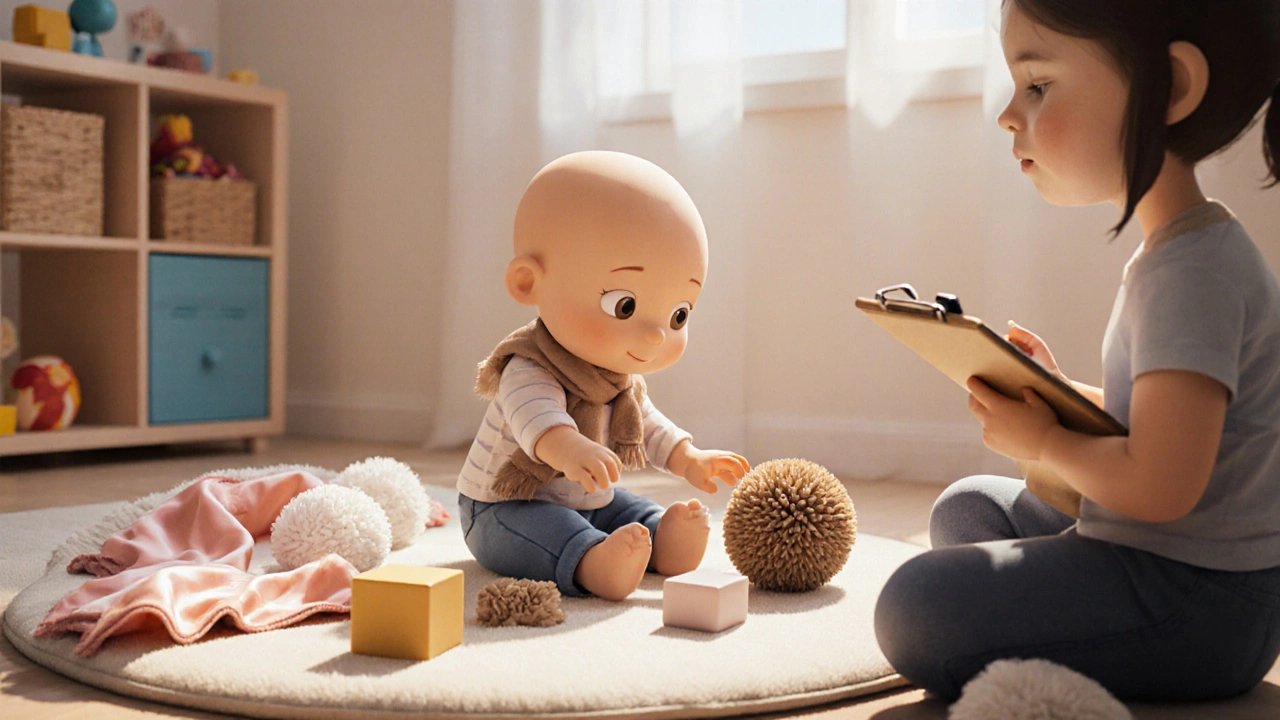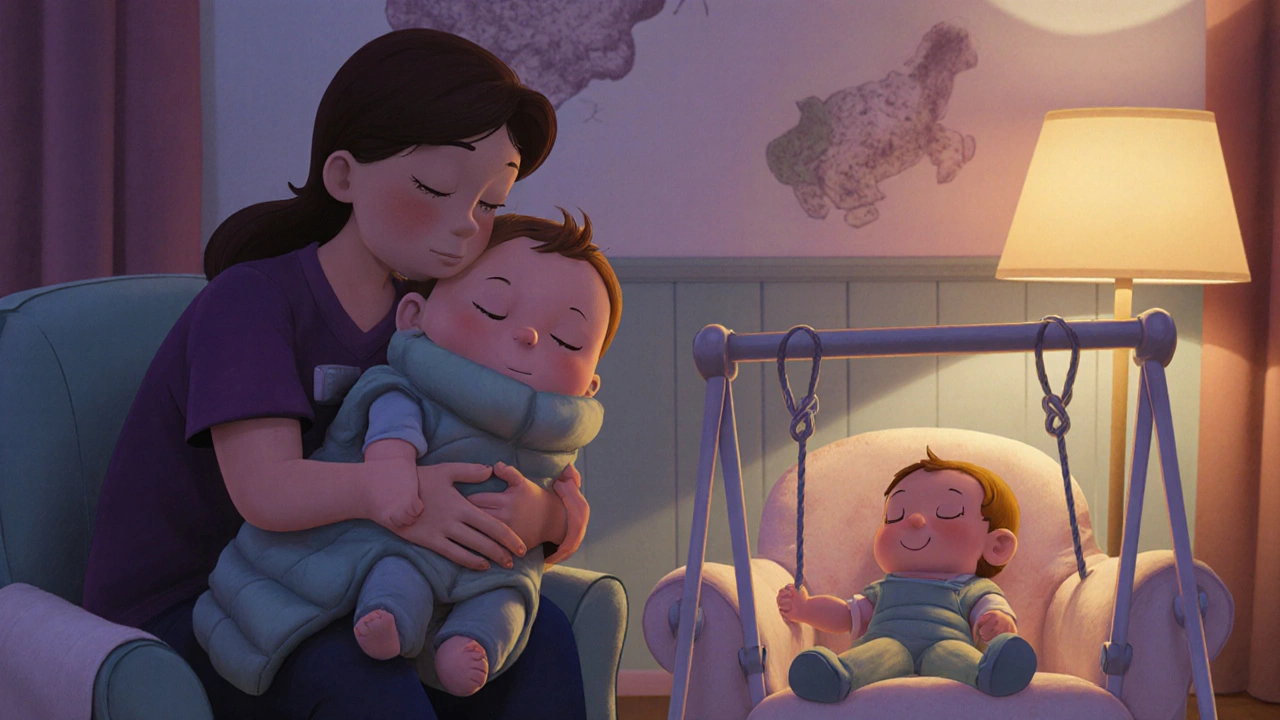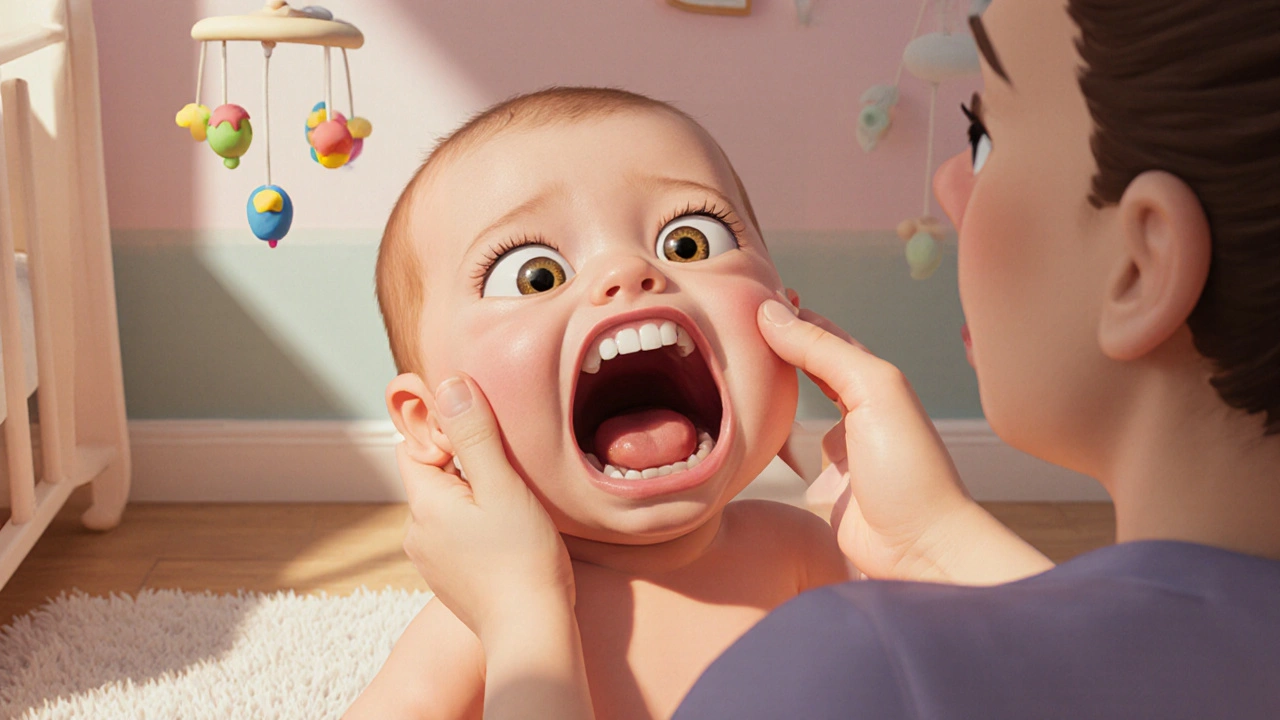Infant Sensory Processing Checklist
This checklist helps you assess your baby's sensory development against typical milestones. Mark any red flags that apply to your baby. If you see 3 or more red flags, consider discussing with your pediatrician or occupational therapist.
0-2 Months
3-4 Months
5-6 Months
7-9 Months
10-12 Months
When a baby’s cries seem unusually intense or they grimace at gentle touches, parents often wonder if something’s off. Sensory Processing Disorder is a neurological condition where the brain misinterprets sensory information, leading to over‑ or under‑reactions to everyday stimuli can start showing up before a child even crawls. Understanding how Infancy the first twelve months of life, marked by rapid brain growth and sensory milestones shapes the way a child experiences the world is the key to spotting early signs and getting help fast.
What Is Sensory Processing Disorder?
SPD isn’t a single disease; it’s a set of patterns where the nervous system struggles to organize sensory input-sights, sounds, textures, movements, and even internal cues like hunger. Kids with SPD may be hypersensitive (reacting strongly to low‑level stimuli) or hyposensitive (seeking intense input). The condition can affect any sensory system, but the most common for infants involve tactile, vestibular (balance), and proprioceptive (body sense) pathways.
How Sensory Processing Develops in Infancy
During the first year, the brain’s sensory cortices wire up at a breakneck pace. By three months, most babies can track moving objects; by six months they start reaching for toys, testing texture and weight. These milestones reflect the infancy sensory processing trajectory that clinicians use to gauge typical development. When the wiring goes awry, the infant may miss-or over‑react to-these cues.
| Age | Typical Milestone | SPD Red‑Flag |
|---|---|---|
| 0‑2 mo | Calms with gentle rocking | Fails to settle despite soothing, or becomes agitated by mild motion |
| 3‑4 mo | Follows objects with eyes | Stares blankly or turns away from moving patterns |
| 5‑6 mo | Explores with hands (puts objects in mouth) | Refuses to touch certain fabrics or gagging on any texture |
| 7‑9 mo | Rolls over, begins to sit | Resists being placed on tummy or appears unusually stiff |
| 10‑12 mo | Crawls, pulls to stand | Seeks extreme movement (spinning, shaking) or freezes when lifted |
Early Signs of SPD in Babies
- Extreme reactions to everyday sounds-crying at a vacuum cleaner while other babies are indifferent.
- Avoidance of specific textures: refusing certain blankets, clothing tags, or even the feel of a diaper.
- Difficulty with motor milestones: seeming unusually floppy or overly rigid when learning to sit or crawl.
- Irregular sleep patterns that don’t improve with routine changes, often linked to vestibular over‑sensitivity.
- Frequent tantrums or “meltdowns” that appear out of proportion to the trigger.
These behaviors aren’t just quirky; they can indicate that the infant’s brain is over‑loading or under‑loading sensory streams. Early detection matters because neuroplasticity is highest in the first two years, making interventions far more effective.

Common Misconceptions About Infant SPD
Many parents assume a “fussy baby” is simply a phase or that SPD only shows up in school‑age children. The truth is that sensory challenges can be present from day one, and they often masquerade as other issues-like reflux or colic. Another myth is that SPD always requires medication. In reality, most treatment plans focus on occupational therapy, sensory integration activities, and environmental adjustments rather than drugs.
Assessing Sensory Issues in Infants
Professional assessment typically involves a pediatrician’s developmental screen followed by a referral to an occupational therapist (OT) trained in sensory integration. The OT may use tools such as the Infant Sensory Profile or the Dunn’s Sensory Processing Measures to rate reactions across tactile, vestibular, and proprioceptive domains. Observations take place in a playroom setting where the therapist watches how the baby handles toys of varying texture, movement, and volume.
Key assessment criteria include:
- Responsiveness to gentle touch versus aversion to a light brush.
- Balance and movement reactions when placed on a therapy ball or cushion.
- Self‑regulation of arousal-does the baby calm down after a deep‑pressure hug, or become more agitated?
Results guide a personalized intervention plan that targets the specific sensory systems that need support.
Early Intervention Strategies
Once an OT identifies the sensory profile, families receive a toolbox of home activities designed to gradually desensitize or stimulate the child. Some proven tactics include:
- Deep‑pressure input: snug blankets, gentle squeezing, or a weighted baby vest (under professional guidance).
- Calming vestibular movement: rocking in a swing, slow stroller rides, or side‑lying while you hum a lullaby.
- Tactile exploration: offering a variety of fabrics-silk, fleece, silicone-allowing the baby to touch at their own pace.
- Proprioceptive activities: holding the infant in a “big hug” position, or gently bouncing them on a therapist’s lap.
The goal is to create a predictable sensory diet that balances challenge with comfort. Consistency is crucial; short, frequent sessions (5‑10 minutes) work better than occasional long ones.

Supporting Your Baby at Home
Beyond therapist‑guided exercises, everyday routines can be tweaked to reduce sensory overload:
- Keep lighting soft-avoid harsh fluorescent bulbs, opt for warm LED fixtures.
- Minimize background noise during feeding or nap time; white‑noise machines can help mask sudden sounds.
- Choose clothing without tags and with seamless seams; soft cotton or bamboo fabrics are usually well‑tolerated.
- Schedule tummy‑time on a textured mat gradually, increasing duration as the baby shows comfort.
- Watch for signs of fatigue-over‑stimulation often leads to irritability and disrupted sleep.
Documenting reactions in a simple journal can help you and your OT spot patterns and adjust the sensory diet accordingly.
Prognosis and Long‑Term Outlook
With early identification and targeted therapy, many children outgrow the most severe sensory challenges by school age. However, some continue to experience heightened sensitivities that affect academic performance or social interaction. Ongoing collaboration with OT, teachers, and caregivers ensures that accommodations (like sensory breaks or alternative seating) remain in place as the child grows.
Frequently Asked Questions
Can a newborn be diagnosed with SPD?
A formal diagnosis usually follows a thorough assessment after the infant reaches a few months old. However, clinicians can flag sensory concerns as early as 2‑3 months based on observable reactions.
Is medication ever used for infant SPD?
Medication is not a first‑line treatment. Therapies focus on sensory integration, environmental changes, and parent‑led activities. In rare cases where severe anxiety co‑exists, a pediatrician might consider a low‑dose medication under close monitoring.
How long does occupational therapy last?
Therapy duration varies. Some families achieve goals within 3‑6 months of weekly sessions, while others continue with periodic check‑ins through early childhood.
Will my baby outgrow hypersensitivity?
Many children become less reactive as their nervous system matures, especially with consistent sensory diet practices. Some sensitivities may persist, but they often become more manageable.
What red‑flags should prompt a pediatrician visit?
Frequent crying that doesn’t calm with usual soothing, extreme aversion to textures, delayed motor milestones, and irregular sleep patterns are key signs to discuss with your doctor.
Understanding the link between infancy and sensory processing gives parents the power to act early, tailor environments, and partner with professionals. By watching for subtle cues, seeking assessment, and implementing a sensory‑rich routine, you can set the stage for smoother development and a happier baby.

